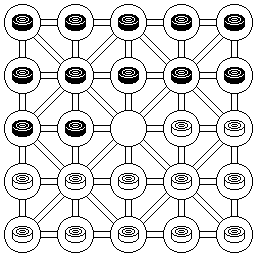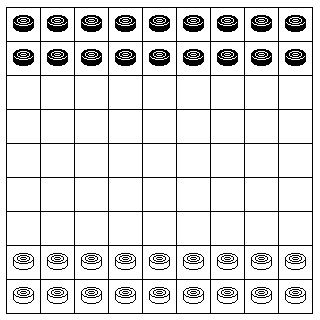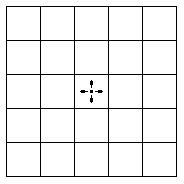
The ancestor of Checkers was the game of Alquerque. Pieces moved and jumped to capture along the lines of the board, orthogonally or along those diagonals that are marked, with no restrictions on backwards movement. The object is to capture all the opponent's pieces, or make the opponent unable to move, as in regular Checkers. Capture is compulsory, with a piece that fails to capture subject to being removed from the board, or huffed, as a penalty, as was an old rule in Checkers.

Hasami Shogi is an interesting Japanese game because it has some similarities to the ancient game of Ludus Latrunculorum, which is a predecessor of Checkers if not necessarily a direct ancestor of it.
Pieces move one step forwards, backwards, or sideways. They can also jump a piece of either color; they may only make a single jump in a turn, and this does not capture the piece jumped over. A piece is captured when a piece of the other color moves so as to sandwich it (orthogonally) between two pieces of its color; this is called custodian capture. A piece may, however, safely move between two pieces of the opposite color. Also, a piece trapped in the corner is captured.
The objective is to capture all the opponent's pieces.

The game of Seega is believed by many to be a game closely related to Ludus Latrunculorum which still survives.
First, players alternate turns placing two of their pieces anywhere on the board except the central square, until the board is filled with twelve pieces for each player.
Pieces move one space, or jump over one man of either color without capturing. Capture is by custodian capture, but a piece standing on the center square is immune to capture.